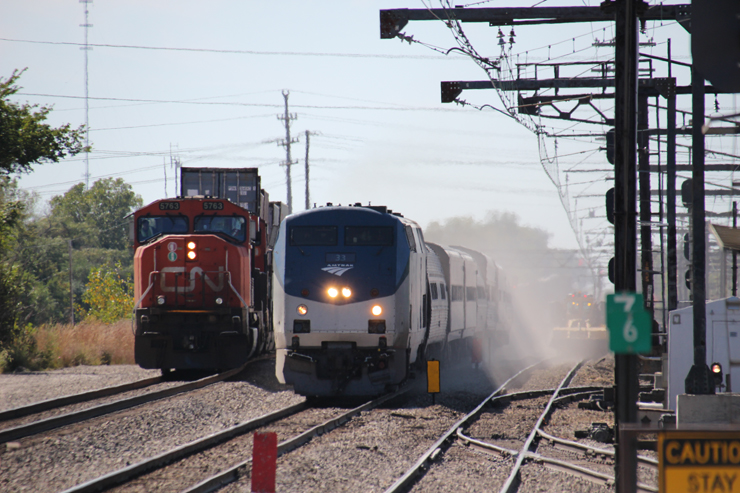
Ride Amtrak outside of the Northeast Corridor and there’s a good chance you’ll arrive late because freight traffic delayed your train — despite the law that gives passenger trains preference. Amtrak is challenging host railroads Union Pacific and Norfolk Southern with a pair of high-profile on-time performance cases that aim to put teeth into the 1973 preference law.
But what about delays that Amtrak’s right of preference inflicts on freight trains?
This question puts the shoe on the other foot for Amtrak. Canadian National, in its long-running operating agreement dispute with Amtrak, argues that it should be reimbursed for costs that arise when its freights have to wait for meets with passenger trains. And now federal regulators have asked CN to tally its 2024 Amtrak-related freight delay costs.
The request, made this month, signals that the Surface Transportation Board is considering a dramatic expansion of what Amtrak is required to pay host railroads. The case could have wide-ranging implications for Amtrak’s existing service, its plans for new routes, and its goal of reaching operational profitability.
Since its creation in 1971, Amtrak has been on the hook for so-called incremental costs – defined as expenses the railroad could avoid if Amtrak wasn’t running. Traditionally this has meant paying host railroads a per-mile fee to cover Amtrak’s share of track maintenance.
But CN contends that there’s a cost to the right of preference, too, because it has to keep its freights out of Amtrak’s way. And so CN wants compensation for those delays.
This is not exactly news: The dispute has dragged on for an astonishing 12 years. So you can be forgiven for not following or remembering the twists and turns in a case that has moved at a glacial pace. After CN and Amtrak were at loggerheads over a new operating agreement, Amtrak in July 2013 asked the STB to set terms and compensation for its use of CN lines. Six years later, the STB decided that incremental costs could include those related to freight train delays. These include extra crew, fuel, and locomotive and car-hire expenses, so long as CN can pinpoint them with data that can be quantified and verified.
The 2019 STB decision didn’t endorse CN’s proposed freight delay cost formula. But it did open the door to alternatives, like a higher per-mile charge. Either way, if the STB ultimately adds freight delay costs to the new operating agreement, the impact could be significant.
CN says Amtrak delayed its freights 680.48 hours in December 2019. The cost? A total of $219,691 in extra labor, fuel, and locomotive and car expenses. If that’s a typical month, Amtrak’s tab would be $2.6 million annually for its direct impact on CN’s freight operations.
The other Class I railroads are watching closely. If the STB allows CN to recoup delay costs, they all would want the same treatment.
Last year Amtrak paid host railroads $248 million. CN ranks fifth among Amtrak hosts with 1.4 million annual passenger-train miles, putting it way behind leader BNSF Railway (6.7 million passenger train miles), UP (6 million), CSX (5.5 million), and NS (2.8 million) – all of which handle Amtrak trains on far busier routes than CN’s. And that means a greater potential for Amtrak-related freight delays on the big four U.S. systems.

You don’t have to be a math whiz to realize this could blow a hole in Amtrak’s plan to erase its annual operating deficit, which last year was $705 million. It also would put Amtrak’s long-distance trains further into the red and make state-supported routes more expensive. Would states reduce service or absorb the higher cost?
Naturally, Amtrak favors the status quo. Its lawyers argue that Congress never intended incremental costs to include those associated with providing Amtrak trains with preference. Amtrak also points out that CN alone controls factors affecting the performance of its freight trains, including the growth in freight traffic, the single-tracking of the Illinois Central main line, and the operation of long trains that don’t adhere to their schedules. In other words, if CN tolerates delays of its own making, why force Amtrak to pay?
With government efficiency czar Elon Musk calling for the privatization of Amtrak, and Transportation Secretary Sean Duffy said to support the concept, the prospect of having to pay for freight train delays is the least of Amtrak’s worries. But the CN case, which may be decided this year, bears watching.
You can reach Bill Stephens at bybillstephens@gmail.com and follow him on LinkedIn and X @bybillstephens






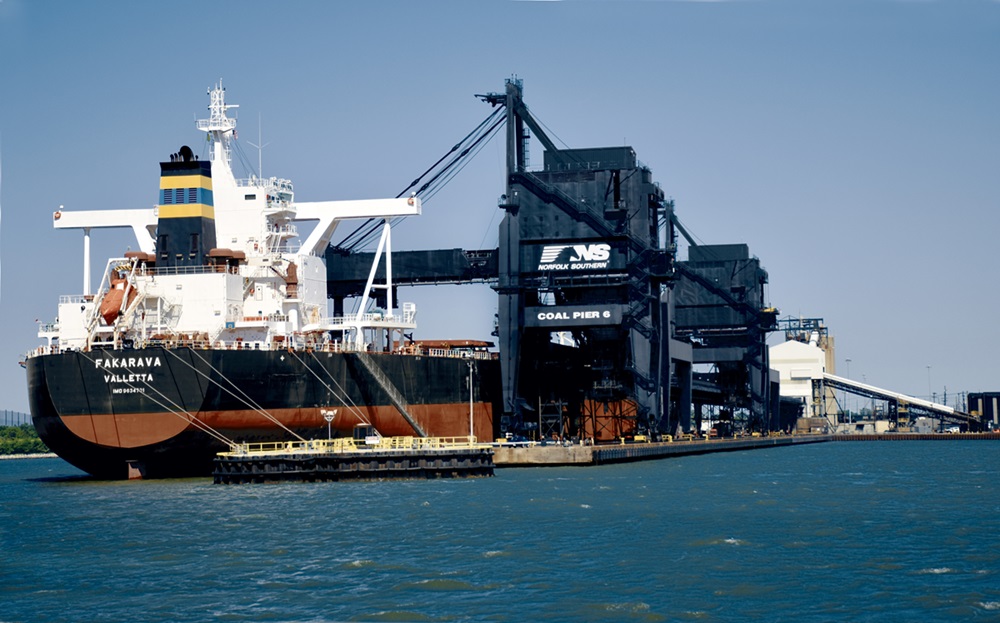
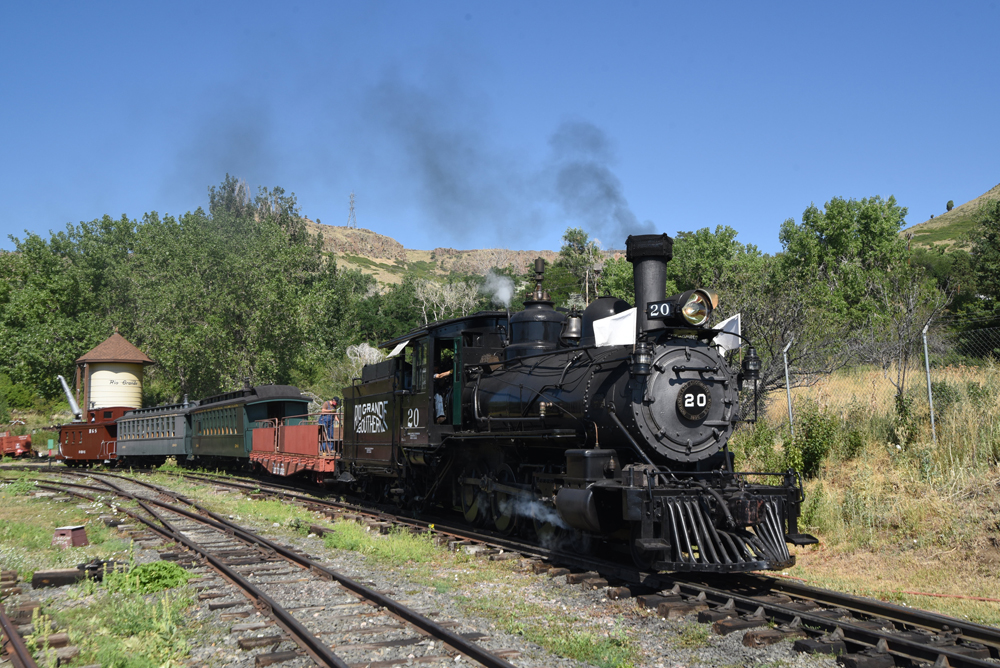
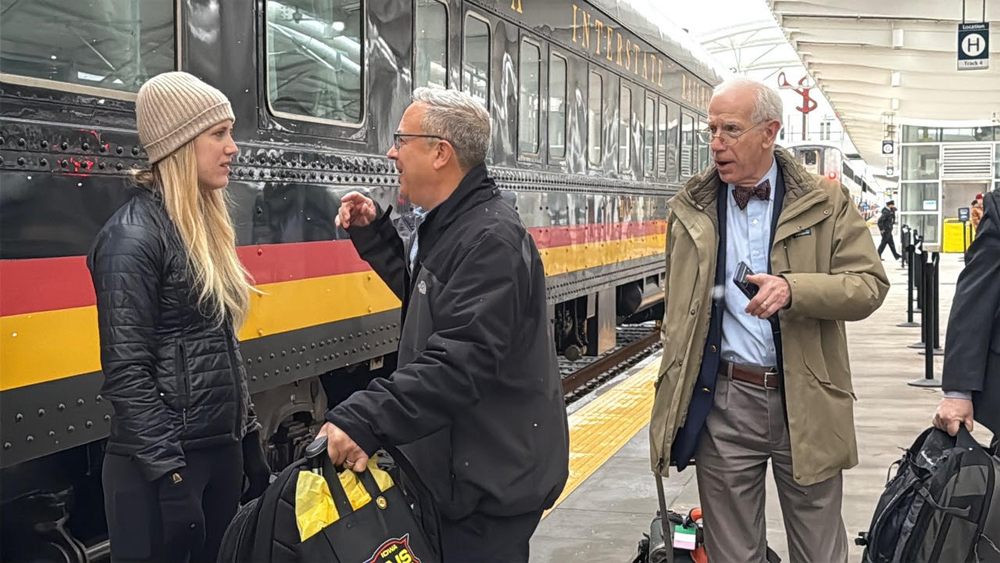
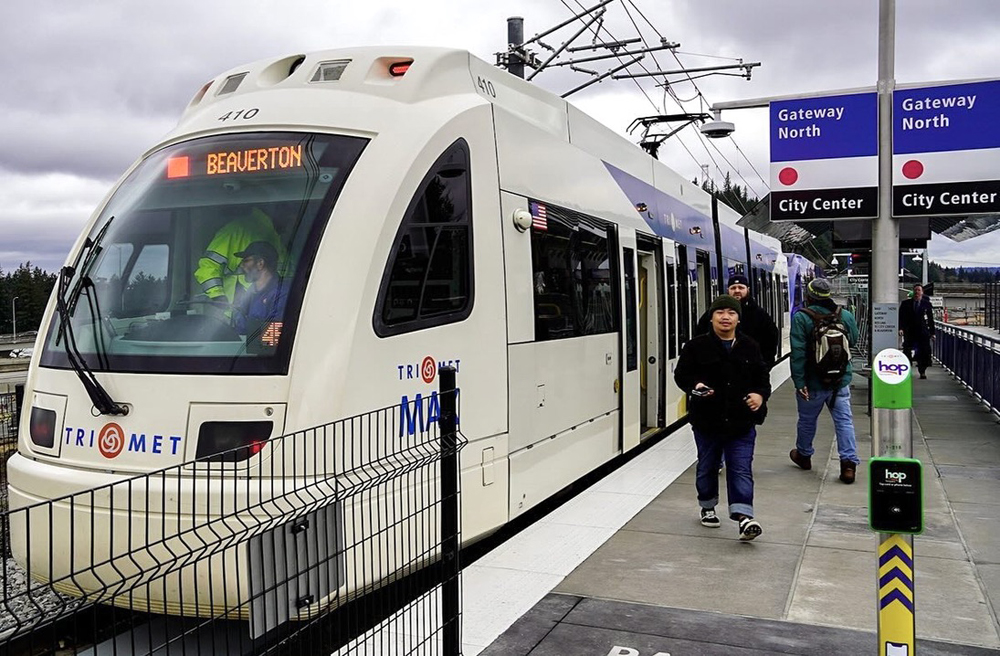
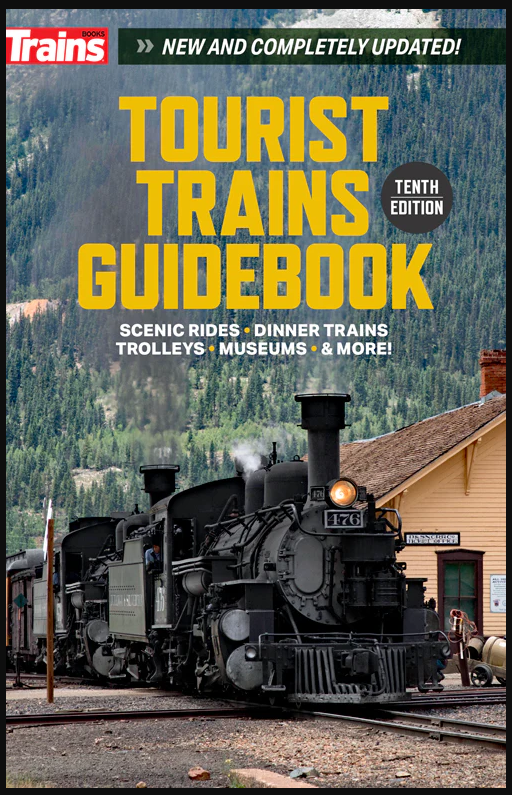
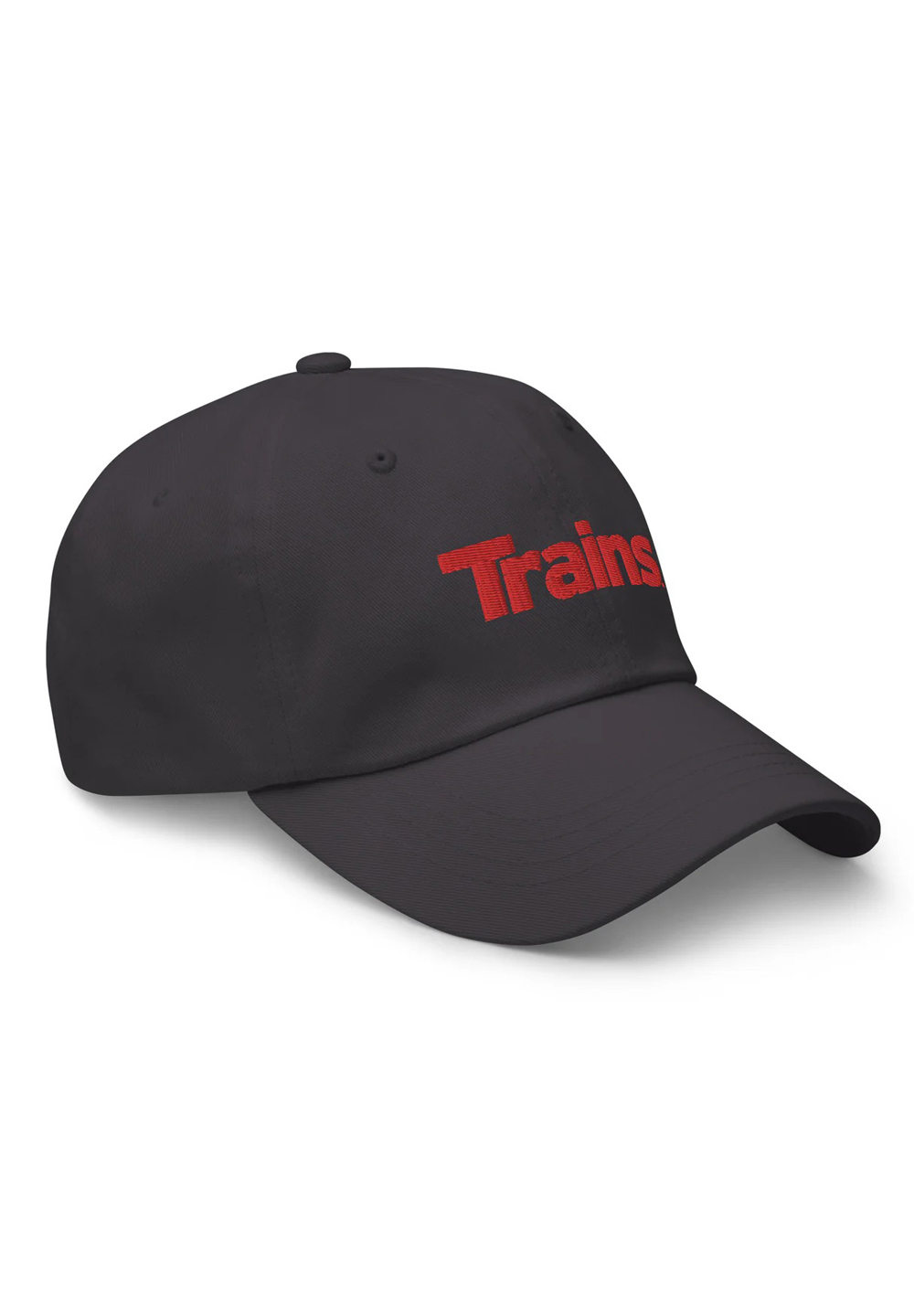
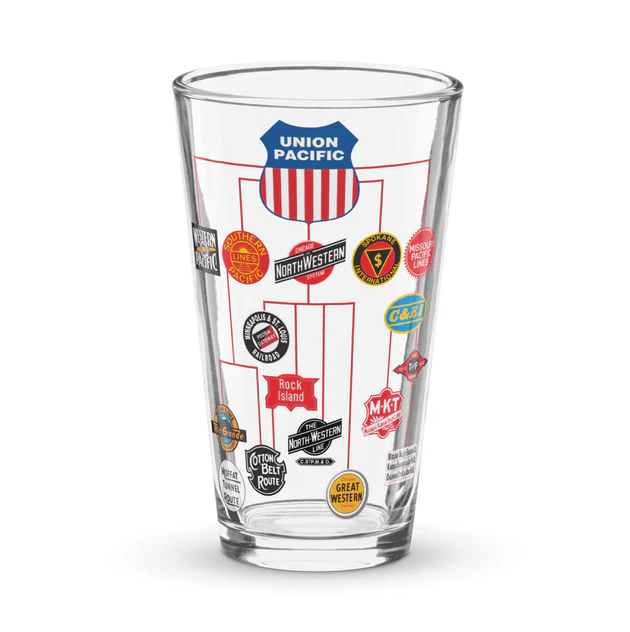
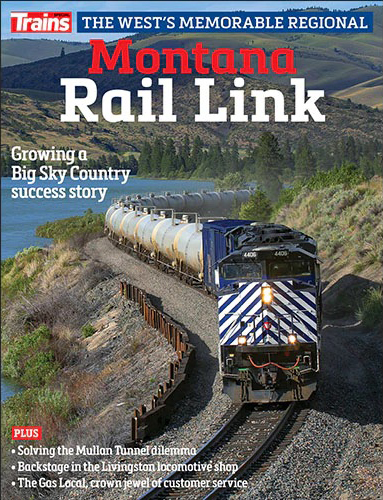
It’s interesting that CN’s only long distance Amtrak train, the City of New Orleans, is the best (or least poor) performer. It would be useful to know the on-time performance of CN scheduled freight trains.
Amtrak explains this complex issue from its perspective to its interested passengers at the following web address…
https://www.amtrak.com/on-time-performance
Dr. Güntürk Üstün
Being that CN is in charge of dispatching it’s easy to set Amtrak up to fail. If Amtrak is forced to pay for delays to freight trains then maybe they are a third party should be included in the dispatching.
Inevitably it comes back to money – it always has. How much does it cost? What are the people willing to pay for the service? Perhaps it’s time for a due-over. Give the intra-state services to the states, and let Amtrak focus only on interstate services. That would put our national government’s focus on national requirements. The states would work out and pay for their own service requirements.
What would be even better is if all the long-distance trains were discontinued. Then the problem would almost disappear.
Robert ….. nope. Corridor trains also run over private freight railroads including CNR.
Let’s be VERY clear what has happened. The class 1s have spent the past 45 years ripping out capacity while at the same time running the same or slightly increased tonnage on fewer trains on less infrastructure. The class 1s have largely refused to spend CapEx on capacity additions, retaining 5000-7000 foot sidings while running 15000 foot trains. More money has been handed out with share buybacks and dividends.
After intentionally allowing the degradation of their operations, they now attempt to hold up the taxpayers demanding hundreds of millions, if not billions in handouts. This is coming from an industry that has an operating margin approaching 50%.
Robber Barrons.
Have to wonder if CN is trying to put up a red herring. NS evidently changed dispatch practices on the route from NOL – BHM with much fewer Amtrak and NS freight delays. Even the very difficult profiles from BHM >? ATL is performing better. even BHM ATL On times are better for Amtrak. Not sure about NS freights. There have not been delays at Howell by CSX lately.
The real takeaway is that the structure for the Freight-Amtrak relationship is fundamentally broken. It generally worked until the 90s mergers because of excess capacity and those tasked with running Amtrak on the Class 1 side still had a cultural understanding/connection to the pre-Amtrak days. That is long gone.
What CN is proposing, while ‘fair’ and logically sound just furthers an already adversarial situation where the logical conclusion is for Amtrak and Class 1 to argue indefinitely on the cause of delays and who pays. If Amtrak should pay for a recrew for CN. Shouldn’t CN pay for accommodating misconnects from a broken knuckle?
The result is no one actually running their trains, just arguing about who is responsible. This goes back to a structural broken structure. Would CN entertain a deal where CN pays for the downline costs a freight rail user encounters due to poor freight service?
Amtrak has an incredibly good deal. They probably should pay more for access. They should also want a relationship where they are treated as a valued customer. Class 1s should also want to see Amtrak as a profitable relationship and not a nuisance. It would make both of their lives easier.
Also – it would be interesting to know how much of that $248 M paid was for services, like rescue locomotive rentals, as that seems high for just infrastructure access at the current rates. That would be an interesting story as the new units were billed as so much more efficient.
Bill – Thanks for the analysis as this has been a long case! I wonder if data is being considered now for the recent period since CN/ICRR started just running most of their trains to fit the siding lengths that exist and the freight speeds increased?
The figures you gave for CN came to $1.85/TM isn’t crazy land, but I have to wonder if equipment expense is really germane as unless a cutoff for a daily departure was missed their wasn’t any additional daily expense.
At the end of the day Congress needs to set a public investment metric for Intercity rail per Train-Mile that is similar to the incremental gap between fuel taxes and the financial costs of an Interstate Highway (about $17.2/TM in $2020) and have that pay for all of the Below-the-Rail mainline infrastructure, terminals, servicing yards, risk, and security cost before figuring out if trains can be enlarged to cover the Above-the-Rail cost solely from consumer fares.
Then the slightly higher fees asked for from the Class-I wouldn’t be a deal breaker and everyone could focus on improving the service quality, to both freight shippers and passengers.